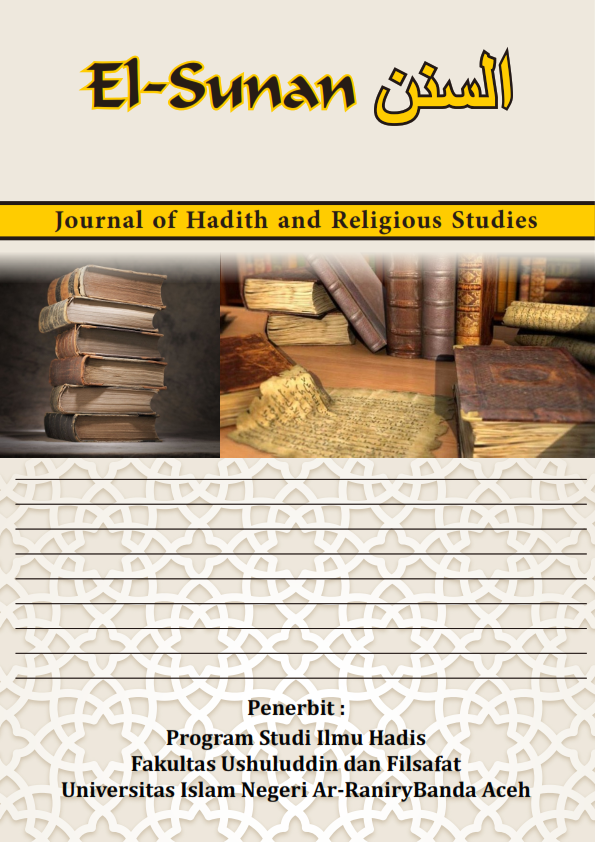Takhrij Hadits: Pemahaman, Metode, dan Tujuan
DOI:
https://doi.org/10.22373/el-sunan.v1i2.4113Keywords:
Hadis, Takhrij, IslamAbstract
Hadith, as one of the sources of Islamic law, plays a crucial role in guiding the Muslim community. However, the level of certainty regarding hadith varies; some are mutawatir with a authority comparable to the Quran, while others are ahad, requiring further research into the characteristics of their narrators. This study aims to comprehensively describe the intricacies of takhrij hadith and illustrate the significance of this research in maintaining the integrity of hadith as one of the primary sources of Islamic law. Through this study, it can be identified that a profound understanding of the characteristics of hadith, the status of narrators, and the authenticity of hadith is crucial. The process of takhrij provides rich information about the chain of transmission (sanad) and the content (matn) of hadith. Takhrij of hadith is not merely a method; it is also a holistic approach that opens a window to a profound understanding of the scholarly heritage of Islam.
ABSTRAK
Hadis sebagai salah satu sumber hukum Islam, memiliki peran penting dalam membimbing umat Muslim. Namun, tingkat kepastian hadis berbeda-beda; ada yang mutawatir dengan otoritas serupa Al-Quran, dan ada yang ahad, memerlukan penelitian lebih lanjut terkait sifat-sifat perawinya. Kajian ini bretujuan untuk mendeskripsikan tentang seluk-beluk takhrij hadis dan pentingnya penelitian ini dalam menjaga integritas hadis sebagai salah satu sumber utama hukum Islam. Dari kajian ini dapat diketahui bahwa pemahaman mendalam mengenai sifat-sifat hadis, status perawi, dan autentisitas hadis merupakan hal yang sangat penting. Proses takhrij memberikan informasi yang kaya tentang keadaan sanad dan matan hadis. takhrij hadist bukan hanya sekedar metode, tetapi juga suatu pendekatan holistik yang membuka jendela menuju pemahaman yang mendalam terhadap warisan keilmuan Islam.
References
Al-Asqalani, Tahdzib Al-Tahdzib, juz 10. Kairo : Maktabah Al-Aiman. Al-Razi, Al-Jarh wa Al-Ta’dil, juz 1. Kairo : Maktabah Al-Aiman.
Ash-Shidieqiy T.M. Hasbi, Pokok-Pokok Ilmu Dirayah Hadist, jilid 2. Jakarta: Bulan Bintang, 1976.
Ismail M. Syuhudi. Cara Praktis Mencari Hadist. Jakarta: Bulan bintang, 1991.
Ismail M. Syuhudi. Metodelogi penelitian hadist Nabi. Jakarta: Bulan bintang, 1991.
Khon Abd. Majid. Ulumul Hadist. Jakarta: Amzah, 2012.
Khon Abdul Majid. Takhrij dan Metode Memahami Hadist. Jakarta: Amzah, 2014.
Muhdi Abdul. Thuruq Takhrij Al-Hadist. Kairo : Al-I’tisham 1987.
Downloads
Published
How to Cite
Issue
Section
License
- Authors retain copyright and grant the journal right of first publication with the work simultaneously licensed under an Attribution-NonCommercial-ShareAlike 4.0 International (CC BY-NC-SA 4.0) that allows others to share the work with an acknowledgment of the work's authorship and initial publication in this journal.
- Authors are able to enter into separate, additional contractual arrangements for the non-exclusive distribution of the journal's published version of the work (e.g., post it to an institutional repository or publish it in a book), with an acknowledgment of its initial publication in this journal.
- Authors are permitted and encouraged to post their work online (e.g., in institutional repositories or on their website) prior to and during the submission process, as it can lead to productive exchanges, as well as earlier and greater citation of published work.












.png)




